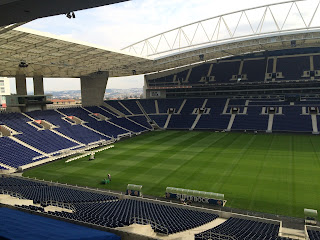Elegantly straddling the meandering estuary of the River Douro, picture perfect Porto deserves to be known as more than just a haven for wine connoisseurs.
While Portugal’s second city is globally famous for the packing, transporting and exporting of port wine, the city also offers stunning views and locals have a refreshingly slow pace of life.
Despite having to get up in the dead of night (1:15am to be exact) to begin our journey from deepest darkest Cornwall, it’s easy to see why Porto is becoming one of Europe’s trendiest weekend getaways.
Less than a two hour flight from Bristol Airport and we were greeted by blue skies and balmy October temperatures. Porto Airport is connected to the city via the efficient and extensive Metro system, meaning that you are in the thick of it within an hour and all for less than three euros.
Defying our distinct lack of sleep, we checked in at the centrally located Hotel Aliados which stands aside the vast avenue of the same name, chucked in our bags and immediately set about seeing what the city had to offer.
As always, we purchased a ticket from one of the city’s three open top bus tours and were ferried around for the afternoon, quickly getting our bearings and establishing points of interest to which we wished to return.
Port caves and factories aside, Porto’s showpiece is undoubtedly the spectacular views from the numerous giant bridges connecting both sides of the River Douro.
The river is lined on the one side with industry related to port production and on the other, unstable but quaint looking terracotta roofs that stack up and back up towards the city centre and its designer shops.
It’s well worth an afternoon wondering the banks of the Douro and the Ribeira district taking in the charming architecture and sampling some of cuisine at the many family-run restaurants.
In fact, the city is a fantastic place to keep active, offering long walks to sandy beaches and plenty of parks, botanical gardens and panoramic viewing spots to marvel at its splendour.
Porto also has a trendy bar scene, but one that rarely gets going until late, by which time we were often in bed due to our hectic daytime sightseeing schedule.
Although I wasn’t taken by the signature dish the franceschina (meats and bread with melted cheese spoilt by a strange beer sauce), we did manage to locate a small and cheap kitchen serving up the finest chicken and chips that have ever graced my pallet, a dish that trumped the global dining phenomenon Nando’s.
Also worth a mention is the Café Majestic, the spot JK Rowling penned her Harry Potter novels whilst living in the city, a hive of activity that offers splendid interior design and tasty milkshakes.
On the outskirts of the city is the relatively new sporting arena the Estadio Dragao, the home of Portuguese football powerhouse FC Porto built for Euro 2004.
Although neither FC Porto nor the city’s other team Boavista were at home, we managed to look around both stadiums and were taken aback by the grandeur of the Dragao and its magnificent museum which proudly shows off a glittering history complete with hatful’s of league titles and two Champions League winners trophies.
So within a short, inexpensive Easyjet guided hop and easily explorable by foot in just a few days, I’d be surprised if more people don’t start lining the banks of the River Douro to marvel at Porto’s breathtaking natural beauty and soak in its port-fuelled charm.













































